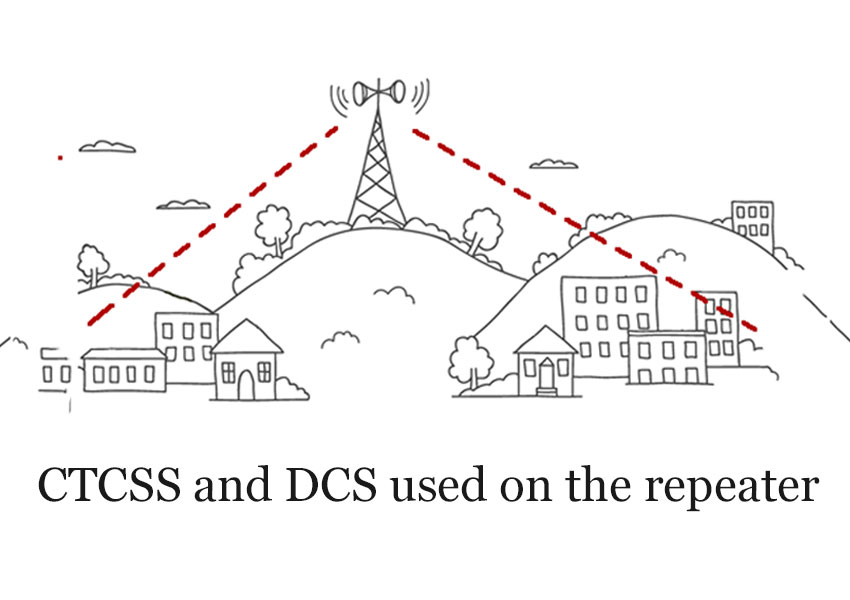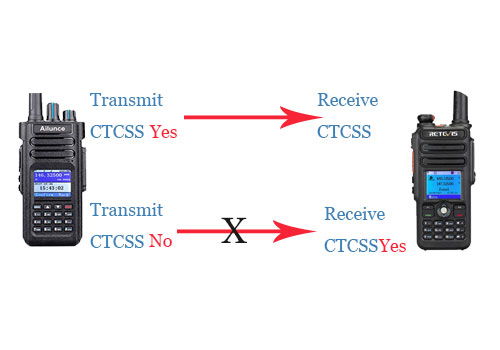+86 15093323284 hams@ailunce.com
CTCSS and DCS Used on Repeater

When there are multiple walkie talkies communicating on the same frequency, Using a CTCSS or DCS tone can prevent interference from the radio which are not related to you.
CTCSS (Continuous Audio Coded Squelch System) is the most commonly used.
The frequency of CTCSS ranges from 67.Hz, 69.3Hz to 257Hz.
When transmitting, this low-frequency, normally inaudible signal is continuously superimposed on the frequency to transmit, and the other party only receives the frequency containing the same tone. CTCSS Can be used to resist interference, or not to listen to signals that are not for yourself.
CTCSS tone including:Transmit CTCSS and Receive CTCSS.
The repeater use”transmit CTCSS tone”, only use TX CTCSS turn on the radio, and the signals without CTCSS tone will be rejected. The signals from repeater can be without CTCSS tone.
When radio receiving, in order not to accept signals that you do not need to listen to, you can add a receiving CTCSS tone.
The agreed CTCSS Tone can be used between two radio (or several radios ) to eliminate extraneous interference signals.
CTCSS tone sometimes can be heard, especially when the tone is set to a high limit (250 Hz) or when the receiver's low-frequency sound is good. Therefore, when setting the ctcss tones, you should try to set it lower to avoid interference.
DCS
Digital Code Squelch is a further development of the continuous tone-coded squelch system.
DCS tone can only be transmitted and received simultaneously (ie, they cannot be set to transmit only and not received).
Myth: when transmitting subtone, the receiver must be set to receive subtone.
No, actually it's the opposite. When transmitting CTCSS tone, the receiver must be able to receive when set to "non-CTCSS-tone receiving state". When set to "CTCSS-tone receiving state", the CTCSS-tone type must be consistent, and the CTCSS-tone code must be consistent before receiving.
Misunderstanding about the CTCSS-tone
Many ham mistakenly think that the CTCSS-tone has a real-time encryption function, but it is not.
Tested result as below picture shows.

The benefits of using CTCSS Tone in group communication
1. Only receive the signals what you want to listen to.
2. Make full use of frequency resources.
For example, at the 438.5Mhz frequency point, the A group sets the CTCSS tone 88.5, and the B group sets the CTCSS Tone 100. Then, group A and group B cannot hear each other's voices, thereby sharing a frequency point without mutual interference and saving frequency resources.
Summary:
In order not to accidentally turn on the transmitter by the clutter signal, the repeater must set the receiving CTCSS tone.
To connect the repeater, the intercom must be set to CTCSS tone.











